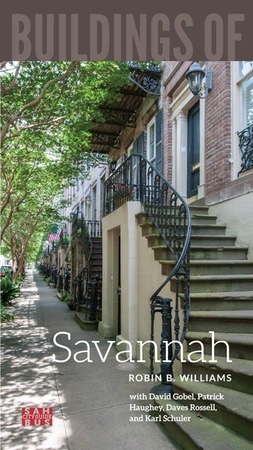
Strikingly traditional when it was rebuilt after a fire in 1950, this church closely resembles its namesake (5.3) on Franklin Square. A small portico marks the entrance to the tall stuccoed church, which has a two-stage tower, small belfry, and slender spire in the center of the facade. This institution anchored the 1872 neighborhood platted by prominent philanthropist Charles J. Hull (of Chicago’s Hull House fame). Just as slaves had looked to the original First African Baptist Church as a beacon of salvation, this portion of East Savannah became a new and unusual land of opportunity—bounded by Gwinette Street to Jones Street (now Iowa) and from Long Avenue east to the marsh—a remarkably large expanse of freely usable land in an otherwise highly restrictive landscape of the Jim Crow South.

